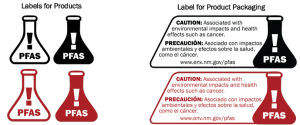Proposed 2026 MSGP: Is Your Facility Prepared for PFAS Stormwater Monitoring Requirements?
EPA’s proposed 2026 Multi-Sector General Permit (MSGP) for stormwater discharges associated with industrial activity would require quarterly monitoring for PFAS—a significant expansion of federal stormwater compliance obligations that facilities should begin preparing for now.
The MSGP implements Clean Water Act (CWA) National Pollutant Discharge Elimination System (NPDES) requirements across 29 industrial sectors. EPA released the proposed permit in December 2024. Once finalized, it will replace the current 2021 MSGP, which expires at the end of February 2026.
The MSGP applies only to areas where EPA is the NPDES permitting authority, including Massachusetts, New Hampshire, New Mexico, the District of Columbia, most US territories, much of Indian country, and certain federal facilities. In a webinar, EPA estimated that 2,000 facilities will be directly affected. However, because many states model their stormwater NPDES permits after EPA, the MSGP is likely to influence stormwater requirements nationwide.
PFAS Monitoring Requirements
Under the proposed 2026 MSGP, operators in 23 industrial sectors would be required to conduct quarterly indicator monitoring for 40 PFAS compounds for the duration of the permit. The list includes PFOA, PFOS, PFHxS, PFNA, PFBS, and HFPO-DA (commonly known as “GenX”)—the six PFAS subject to EPA’s April 2024 national drinking water standards.
Testing must be performed using EPA Method 1633, which uses liquid chromatography and mass spectrometry to identify and quantify individual PFAS analytes. Importantly, the proposed PFAS monitoring is “report-only” and does not include benchmark thresholds or require follow-up actions at this stage.
An EPA fact sheet states that the agency will use the data “to conduct an initial quantitative assessment of the levels of PFAS in industrial stormwater, further identify industrial activities with the potential to discharge PFAS in stormwater, and inform future consideration of potential PFAS benchmark monitoring for sectors with the potential to discharge PFAS.”
Other proposed monitoring updates include new or revised benchmark monitoring parameters for pH, total suspended solids (TSS), chemical oxygen demand (COD), ammonia, nitrate, nitrite, and selected metals in specific industrial sectors. EPA is also proposing a modified benchmark monitoring schedule, with quarterly monitoring required for the first three years of permit coverage or until twelve quarters of monitoring data are collected.
Timeline and Related Actions
EPA intends to issue the final 2026 MSGP before the 2021 MSGP expires on February 28, 2026. Once the final permit is published, operators will need to submit new Notices of Intent (NOIs) for coverage under the new permit.
According to the Spring 2025 Unified Agenda, EPA is also advancing several related PFAS initiatives under the CWA and the Safe Drinking Water Act (SDWA):
- PFAS Monitoring in NPDES Applications: EPA plans to propose a rule in November 2025 to update several NPDES application forms to include PFAS monitoring and reporting requirements.
- Effluent Guidelines for PFAS Manufacturers: EPA expects to propose revisions to the Organic Chemicals, Plastics, and Synthetic Fibers Effluent Limitations Guidelines and Standards in January 2026, addressing PFAS discharges from facilities manufacturing PFAS.
- Drinking Water Standards: EPA is also expected to delay compliance deadlines for its national drinking water standards for PFOA and PFOS, and to rescind requirements for the other four PFAS included in the 2024 rule.
The comment period on the proposed 2026 MGSP closed on May 19, 2025. More on the proposal can be found on EPA’s website.

